Seven home conveniences you should try to live without

- Oops!Something went wrong.Please try again later.
Convenience has always been the mother of invention, from aeroplanes to the internet. But there’s always a hidden cost. And the cost of convenience in products that many of us use every day in our homes may threaten the health and wellbeing of us and our families.
In a 2015 study published in the journal Carcinogenesis, 85 commonly used industrial chemicals found in everyday products were tested to see if they could trigger cancerous tumours. Fifty were found to affect cancer-causing processes, even at the low levels found in our environment.
American author Darin Olien is trying to set the record straight on how some conveniences lure us into a denial of the damage they do. Over the past 50 or so years, more than 80,000 chemicals have been introduced into our environment, and the vast majority wasn’t tested first to see if they were safe for human contact.
The scale is frightening. In November last year, it was reported that toxic PFAS chemicals had been detected in every umbilical cord blood sample across 40 studies conducted over the last five years.
The author of New York Times bestseller SuperLife, who co-starred in the Netflix docuseries Down to Earth with Zac Efron, says: “Unless you’ve been living in a cave on a mountaintop near a bubbling spring far from civilisation for the past 50 years, you definitely have these chemicals in your body.”
His new book, Fatal Conveniences, explains how ubiquitous products – from deodorant to dental floss – are wreaking havoc on our health and our planet. However, Olien’s mission is not to scare you away from using the conveniences you love. “It’s to expose the ones that are damaging us, and show that it’s possible to find terrific products that are not harmful.”
Here are seven fatal conveniences he thinks we can try to live without.
Nonstick cookware
In 1938, a scientist at DuPont was trying to develop a refrigerant gas. Instead, a happy accident in the lab produced a white powder with no apparent benefits except it was slippery. A large number of industrial applications were soon found, but it wasn’t until 1954 that a French engineer’s wife suggested that he try to bond the chemical, called polytetrafluoroethylene (PTFE), to cooking surfaces. Voilà! Nonstick pans were born. In 1960, the US Food and Drug Administration (FDA) approved the use of the chemical for food-related purposes, and Teflon took off.

It was a nice little story – until somebody realised that those pans also contained PFOA, one of the “forever chemicals”, and that if it got into the food, it was probably exposing people to a long list of health hazards, cancer among them. Now, if those pans were never scratched, they might have been safe, but that’s not how things work in the real world. Every little chip or ding of the cooking surface pretty much guaranteed that you’d be eating nonstick chemicals along with your dinner, without ever knowing.
So since 2015, PFOAs in cookware have been replaced by other chemicals from the same family, ones that have not been proven to be dangerous. Of course, that doesn’t necessarily mean they’re safe. Some nonstick pans now advertise themselves as PFOA-free, but PFOA and PTFE are just two of the thousands of polyfluoroalkyl substances used in consumer products, and manufacturers don’t have to disclose their use because it is considered to be a trade secret.
There’s a manufacturing technique called GenX that claims to make nonstick chemicals safely, without PFOAs. But the United States Environmental Protection Agency’s (EPA) assessment shows that even small doses of GenX chemicals could present serious health risks, including harm to prenatal development, as well as the immune system, liver, kidneys and thyroid.
What should we do?
To be safest, don’t use nonstick surface cookware. There are great alternatives. Ceramic nonstick pots and pans are coated with silica manufactured using a process that creates a nontoxic nonstick surface. The only downside is that the coating lasts only one to three years before losing its slipperiness.
Cast-iron pans are a great choice, and they can actually improve your health since some of the iron makes its way into the food.
They are inexpensive, and with proper care, they can be passed down for generations. You can put cast-iron pans into the oven, too, so they’re versatile. You can also use stainless-steel cookware, which heats evenly and lasts a long time. It’s what pro cooks use.
But how will you keep the food from sticking? The same way it’s been done for centuries: by using a little oil or water. If something sticks while cooking, you can unstick it by adding water and stirring the food to loosen the sticky parts. It takes but a few moments of time. In any case, you’ll figure it out.
Dry cleaning
“Dry” is a misnomer, of course, and has been since ancient Romans cleaned stubborn dirt from their togas using ammonia derived from urine. Since then, a variety of petroleum-based fluids, including gasoline, kerosene and turpentine, has been used, and they did the job well.
But once cleaners started using electrical machines, they ran into a problem: the solvents kept catching fire. Starting in the 1930s, our clothes have been cleaned using the chloride-based chemical tetrachloroethylene or perchloroethylene – PCE or PERC for short.

It does the job, but it’s nasty stuff; according to various studies, it’s a respiratory and skin irritant, liver and kidney toxicant, and reproductive and developmental toxicant. PCE is considered to be a potential carcinogen for workers; the International Agency for Research on Cancer has termed it “probably carcinogenic to humans”. Long-term exposure to PCE is especially risky for the brain; it’s been associated with impaired memory, confusion, dizziness, headaches, drowsiness, even colour blindness.
Here’s what’s worrisome: a 2011 study at Georgetown University published in Environmental Toxicology and Chemistry found that PCE remains on dry-cleaned clothing, especially on wool, polyester, and cotton (though not silk), and that it builds up on garments rather than evaporating over time, which is why some wearers eventually develop contact dermatitis. The research also showed that PCE is “volatilized from these fabrics under ambient room air conditions”, meaning that you inhale toxic fumes emanating from your nice clean clothing.
There have been attempts to replace PCE with other chemicals, but these have also proven to be toxic. There are two alternative technologies, however, that have been found to be both effective and safe. One uses liquid carbon dioxide in high-pressure machines and with specialised detergents. This gets clothes clean, with no known harm to humans. The other is professional wet cleaning, or PWC, which also uses high-tech machinery, water, and gentle detergents to do the job, with no damage to the health of consumers, workers, or the environment.
The main drawback of both these methods is financial – it’s expensive to switch over from the machinery that uses PCE. And the dry-cleaning industry is made up mostly of small operators, who are in no position to spend big bucks on fancy new equipment.
What should we do?
Whenever possible, don’t buy garments that say “Dry clean only”. Often, these will be made from synthetic fabrics, so you’re doing two good deeds at once.
Wash fine wool and cashmere knits at home, gently, by hand – remember, before you bought them they were being worn by sheep and goats, who weren’t harmed by soap and water. The garments will also last longer if they are not subjected to harsh chemicals, they will smell better, and they will be softer than if you dry-clean them.
After wearing your clothes, let them air out, preferably in sunlight, rather than automatically taking them to be dry-cleaned. If there’s a stain, try using a spot remover; it’s not necessary to get the whole garment cleaned for every little smudge. If something absolutely must be dry-cleaned, try to find a place that uses one of the green alternatives, liquid carbon dioxide or professional wet cleaning (PWC). Look online, but keep in mind that such cleaners are not found everywhere yet.
Laundry detergent
The machines are fine, I guess. The detergents are not. In 2008, researchers at the University of Washington released a study revealing that the top- selling laundry products emit dozens – dozens! – of different chemicals that can damage our health. Of the 1,147 laundry products evaluated in the Environmental Working Group’s guide to healthy cleaning, only 185 earned an A rating, meaning that the rest had low or no concern for ingredients that may cause cancer, developmental and reproductive difficulties, respiratory problems, skin irritation and allergies, and environmental hazards.
That should give you a good idea of what you’re up against in the laundry aisle. Our clothes come out clean, fresh, and smelling sweet – and full of chemicals capable of causing everything from a rash to cancer.
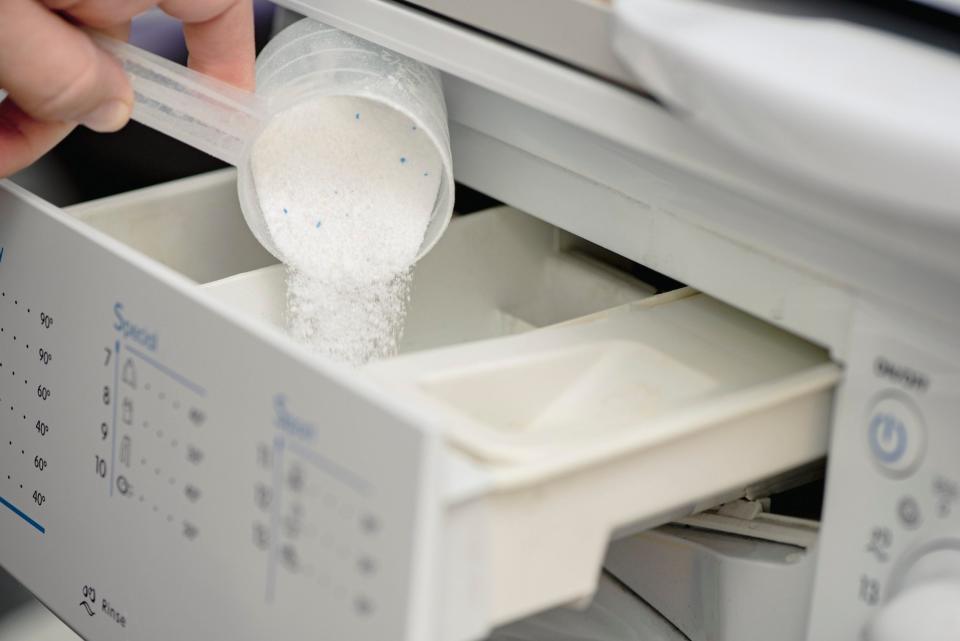
Companies tend to use sodium laureth sulphate (SLES) in detergents because it’s a cheap way to create foam, which we all take as a sign of hardcore cleansing action. The main problem is that when it goes through the process called ethoxylation, there’s a potential for contamination with a possible carcinogen called 1,4-dioxane.
Detergents may also contain optical brighteners, which sound like a contradiction in terms, colourless dyes derived from the chemical stilbene, which can cause irritation of the respiratory tract, skin and eyes. These additives absorb ultraviolet light and reemit it as visible fluorescence, making our clothes look whiter.
Detergent allergies can arise from surfactants, preservatives such as parabens, which are also endocrine disruptors, and fragrance, which is a sign that potentially harmful chemicals have been included for no practical reason. We need to get over our slavery to smell. The EPA’s guide to detergent lists around 50 brands that don’t add fragrances. So detergents that still use it should be easy to skip.
What should we do?
When you go shopping, compare labels and find the products that use the fewest ingredients. Some detergents use only three, such as baking soda (sodium bicarbonate), washing soda (sodium carbonate), and soap or vegetable oils. Castile soap and borax are also safe.
Choose fragrance-free products. If you want clothes that smell like something other than clothes, add a few drops of essential oil, such as lavender, to wool dryer balls.
Use as little detergent as possible, which is probably less than the manufacturer recommends. Unless you work on an oil rig or somewhere else that leaves your garments deeply filthy, try cutting back on detergent and see how your clothes come out.
Even better, hang them outdoors in sunlight and fresh air and see if maybe they’d be acceptable to wear in polite company. If there’s a small stain, see if a stain remover stick can do the job.
Plastic food containers
The main health hazard of plastic food containers comes from what happens when they’re heated. That’s because heat releases the dangerous components of a toxic, hazardous, possibly hormone-disrupting chemical called bisphenol A, or BPA. BPA is found in hardened plastic, meaning in water bottles, toys, and every kind of container, including the kind we use to store food and beverages. It’s even in thermal paper receipts. Its molecules are held together by what’s known to scientists as an ester bond, which is extremely sensitive to heat.
When its temperature rises, the bonds break and the chemicals are unleashed. A survey by the Centers for Disease Control and Prevention of 2,517 people estimated that more than 90 per cent of Americans have detectable levels of BPA in their urine.
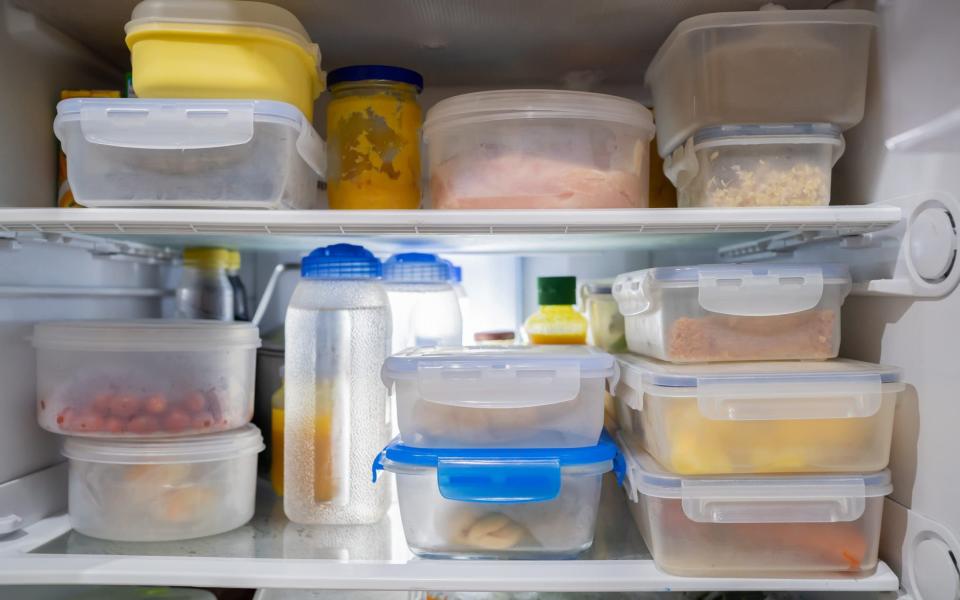
In 2018, the American Academy of Pediatrics expressed concern about scientific evidence showing that when bisphenols contaminate our food, they may interfere with hormones in ways that can affect children’s long-term growth and development. BPA actually mimics oestrogen and has been linked to reduced fertility in men and women, delayed puberty in girls, earlier puberty in boys, and behavioural problems in children.
In the same year, scientists at the University of California, San Francisco, found dozens of chemicals called environmental organic acids, or EOAs, in the blood of pregnant women. These chemicals, which include bisphenol A, have structures similar to that of hormones, meaning they may disrupt the endocrine system of a foetus and interfere with its development. Researchers involved in the study, which was published in the journal Environmental Health Perspectives, said that some of the chemicals had never before been documented in the blood of pregnant women, including two that are linked to genetic defects, foetal damage, and cancer. Among other chemicals detected was an estrogenic compound used in food-related plastic products, plastic pipes and water bottles.
According to the Mayo Clinic, “Exposure to BPA is a concern because of the possible health effects on the brain and prostate gland of foetuses, infants and children. It can also affect children’s behaviour. Additional research suggests a possible link between BPA and increased blood pressure, type 2 diabetes and cardiovascular disease.”
What should we do?
You should use storage containers made of silicon rubber, stainless steel, glass, wood, ceramic, porcelain, or pretty much anything other than plastic. These are also safe if you reheat food in a microwave oven (except for metal containers, obviously), though you might want to reconsider that habit, too. Cutting as much plastic as possible from our lives is the safest way to go.
Some families store pumped breast milk and baby formula in plastic containers – definitely a very bad idea!
Before you buy a plastic food storage container, check the bottom and avoid any with the recycling code 3, 6, or 7. They may contain phthalates, styrene, and bisphenols, unless they are labelled “biobased” or “greenware”, indicating that they’re made from corn and do not contain bisphenols.
Shampoo
Not everything in shampoo and conditioner promotes clean, healthy hair. One chemical isn’t even listed on the label. It’s not an ingredient, technically speaking – it’s a by-product of the manufacturing process. Known as 1,4-dioxane, it’s been found in more than eighty shampoos, cosmetics, and other products.
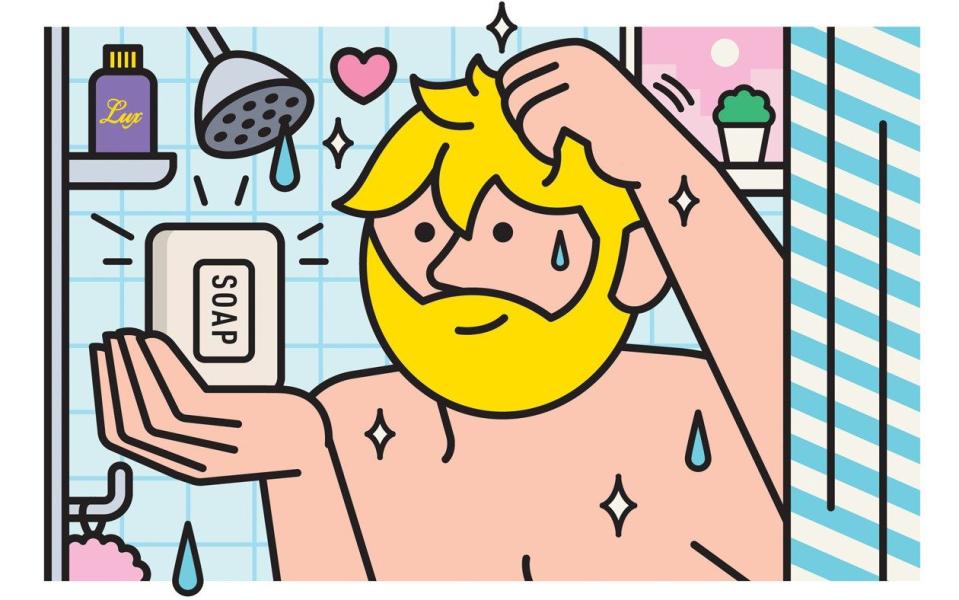
A 2016 report by the National Institutes of Health’s national toxicology programme says that 1,4-dioxane is “reasonably anticipated to be a human carcinogen based on sufficient evidence of carcinogenicity from studies in experimental animals”. The EPA has also classified 1,4-dioxane as “likely to be carcinogenic to humans”. It’s impossible to know for certain which shampoo brands contain it, but ingredients associated with it include sodium laureth sulphate, polyethylene glycol (PEG), polyethylene, polyoxyethylene, and all chemicals that end with oxynol.
Another substance to look out for is cocamide DEA, a foaming agent derived from coconut oil, which might lead you to think that it’s harmless. But it’s not – in 1986 it was added to the state of California’s list of substances found in consumer products that might cause cancer, birth defects, or other reproductive harm. The FDA claims there’s no reason to worry about it, but it also provides a list of common ingredient names related to this chemical: cocamide DEA, cocamide MEA, DEA-cetyl phosphate, DEA-oleth-3 phosphate, lauramide DEA, linoleamide MEA, myristamide DEA, oleamide DEA, stearamide MEA, TEA-lauryl sulfate and triethanolamine.
The use of dry powder to clean hair isn’t new – in fact, back in Elizabethan days, before running water, people put powder on to their hair to reduce its oil and odour. Today, there is dry shampoo – an alcohol or starch-based product in a spray can that soaks up the oil rather than washing it away. But if the propellant contains isobutane, it might also be contaminated with the carcinogen benzene. This is why anything using an aerosol spray is best avoided.
What should we do?
First, recognise that unless you’ve been rolling around in the mud, your hair probably isn’t dirty – and what makes it feel oily isn’t oil, it’s sebum, the waxy substance our bodies produce to protect our skin. The surfactants in shampoo are what permit the soap to wash the sebum away, but keep in mind that as we age, our follicles dry out, which is why most of us don’t need to shampoo more than once a week. Using less shampoo will also spare us some chemical exposures.
Second, accept the fact that shampoo is just soap, not a magic potion. You can use any simple, basic soap on your hair, including the same kind you use on your body, and get good results. Mountains of lather don’t mean that your hair is getting any cleaner, shinier, bouncier, or sexier. It could just mean that you’re being dosed with chemicals you should avoid.
Toothpaste
Most toothpastes contain chemicals that have zero to do with cleaning our teeth and gums. For instance: saccharin is there to make it sweet; sodium lauryl sulphate creates the bubbly foam we take as proof of cleaning power; blue covarine tricks the eye by changing the way light reflects off our choppers, making them appear less yellow and more white; activated charcoal scrubs really well but can damage enamel and doesn’t make our teeth any whiter; triclosan is an antibacterial that actually increases our resistance to other antibiotics.
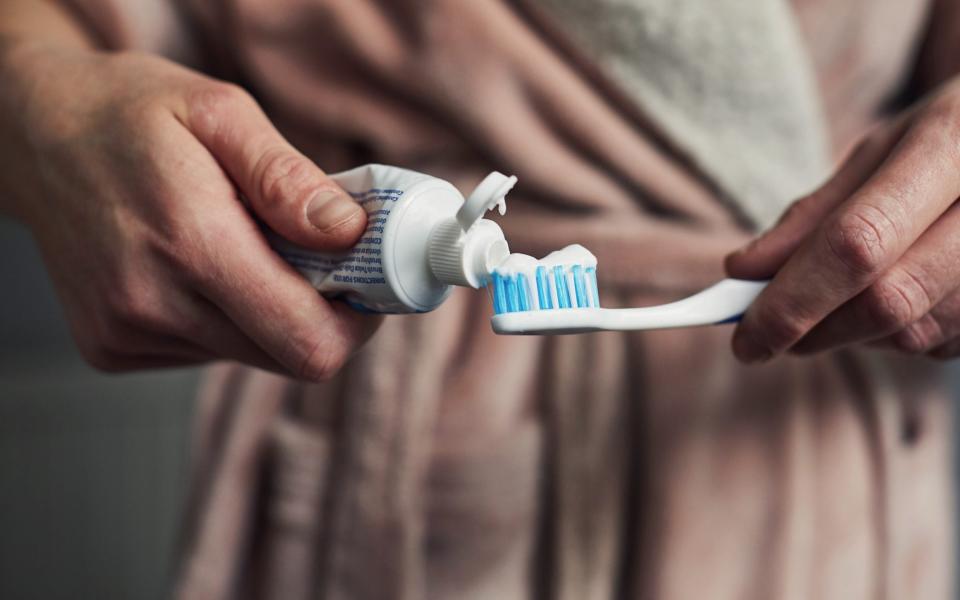
And then there’s fluoride. Early in the 20th century, scientists discovered that areas with high levels of naturally occurring fluoride in their drinking water also had lower levels of tooth decay. The main danger of fluoride has to do with its toxic effects on developing brains. According to a 2012 report from the Harvard T.H. Chan School of Public Health, “Children in high-fluoride areas had significantly lower IQ scores than those who lived in low-fluoride areas.”
What should we do?
Some popular natural toothpaste makers use xylitol, green tea extract, papaya plant extract and baking soda. Drink a glass of water with lemon juice in the morning to knock out overnight bacteria. You can chew on rosemary, spearmint or peppermint leaves for that fresh, minty taste.
Fragrance
A 2020 study found that up to 4.5 per cent of people may be allergic to fragrance chemicals used most often in deodorants, perfumes and aftershaves. Another study found that more than a third of Americans suffer adverse health effects, such as respiratory difficulties and migraine headaches, from exposure to fragranced products. That’s because even “natural” chemicals emit gases known as volatile organic compounds, or VOCs. No wonder people who overdo it with cologne are shunned as walking irritants.
But allergic reactions are the least of our worries. Phthalates are added to fragrance products to make the scent last longer.
According to the FDA, a common one, diethyl phthalate, or DEP, “does not pose known risks for human health as it is currently used in cosmetics and fragrances”. But a 2022 study found that exposure to this chemical and other phthalates is associated with cardiovascular and all-cause mortality.
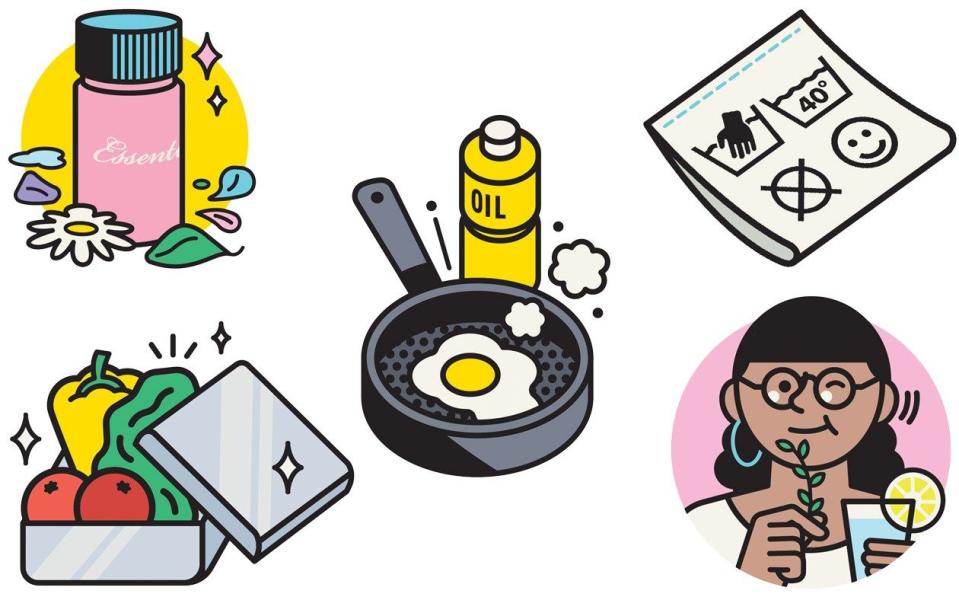
Previous research had linked the chemicals to increases in premature births, gestational diabetes, obesity, breast and thyroid cancers, and infertility. They are also “among the most abundant endocrine disrupting compounds found in indoor air and dust”, according to researchers from the Albert Einstein College of Medicine, who added that exposure to phthalates can affect bone mineral density and sperm function.
Aldehydes are found naturally in plants and are used as fragrance enhancers – they’re what give Chanel No 5 its legendary scent. One type of aldehyde, acetaldehyde, is found in ripe fruit and is used to add a fruity fragrance. But the International Agency for Research on Cancer considers it a carcinogen, and it’s included on California’s Proposition 65 list of cancer warnings.
Can we know for sure that it’s in the fragrances we wear? No, but a study from the 1980s found that exposure to sunlight affects the compounds in perfume bottles, turning ethanol into acetaldehyde. Fragrance ingredients carry the same danger of hormone disruption as in other personal care product chemicals.
A 2002 German study found that women with premenstrual symptoms and infertility had higher levels of artificial musk in their blood samples than women who had been pregnant already and didn’t have premenstrual syndrome. Researchers from the Albert Einstein College of Medicine in New York City have warned that “health concerns associated with exposures to synthetic musks include primarily endocrine disruption”.
What should we do?
Don’t use any product that lists “fragrance” or “parfum” on the ingredients label. If the manufacturer doesn’t tell you exactly what’s in the product, it must have a reason, and it’s probably not good. Even better, try to avoid products that contain fragrance; look for those labelled “fragrance-free.” You don’t need some industrial lab concoction to make you more lovable than you already are. If wearing fragrance is important to you, try using one of the many essential oils or other all-natural substances that people perfumed themselves with for centuries before big business took over.
‘Fatal Conveniences’ by Darin Olien is published by Harper Wave

